LAST week CAFRE and One Equine welcomed a packed house to their collaborative event, The Movement of the Horse – Understanding Equine Health, Performance and Training in Equine Assisted Services. “Connecting humans, health and horses” is the motto of One Equine, a charity with a dedicated team of passionate people who share the mission to “deliver positive change in the provision of Equine Assisted Activities throughout Northern Ireland.” Collaborating with CAFRE, and gathering at the Enniskillen equine campus, well over 100 attendees were warmly welcomed with lunch and an opportunity to meet up with friends and colleagues in the Equine Assisted Activities (EAA) sector. This collaborative meeting of both minds and ambitions for EAA is the crux of why the day was so successful.
Invigorating
Split into three topics, presentations covered Equine Movement and Groundwork Training with Rupert Isaacson of Horse Boy Method and Terri Brosnan from ChildVision, Equine Health and Movement with veterinary physiotherapist Clare-Maria Campbell, and Equine Facilitated Therapy Education for Allied Health Professionals delivered by Ulster University with occupational therapy lecturers Orlagh Daly and Clare McMonagle.
Rupert and Terri delivered an invigorating presentation on therapeutic riding and the vital neuroscience which proves the method’s potency when it comes to supporting people with additional needs. The take home message was that movement of the horse is so much more than just a ride on a pony, science has proven its efficiency in improving motor skills, balance, strength, postural control, coordination and sensory processing to name but a few. The duo also drove home the message of self-care for practitioners and the need for collaboration and kindness within a hugely burgeoning sector at risk of being fractured without solidarity.
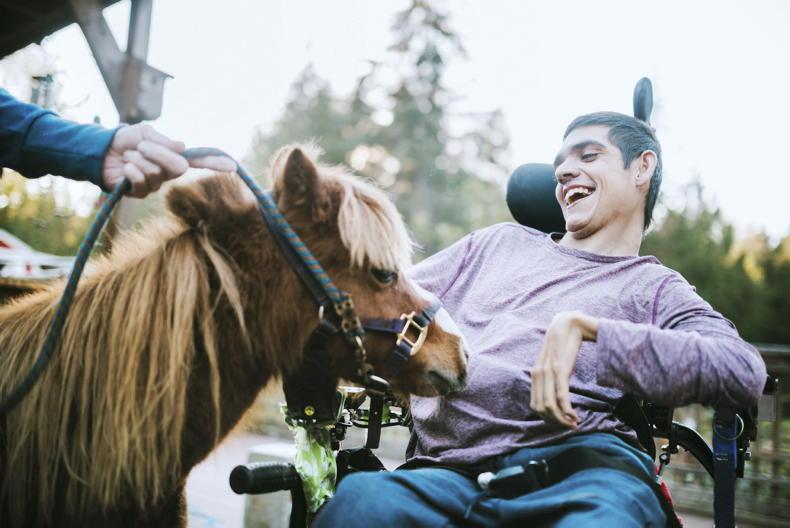
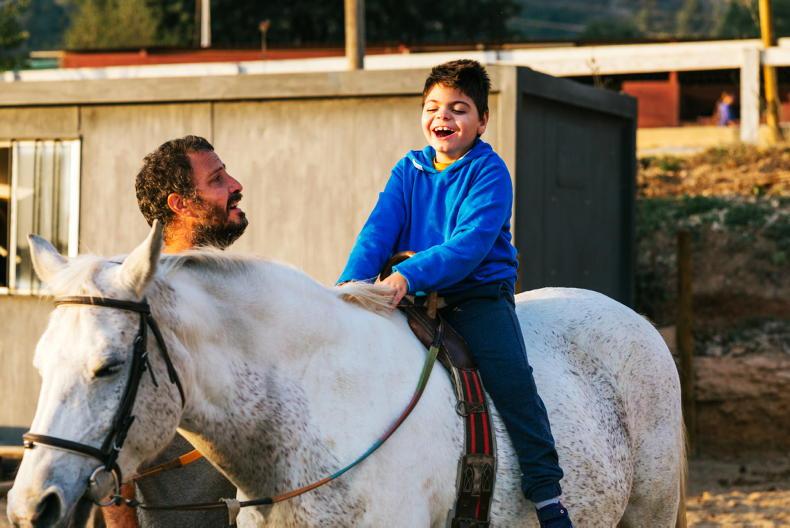
There are many calls for regulation within the sector to define a set of professional standards, and rightly so. Equine assisted services covers a wide range of activities including:
Hippotherapy - occupational therapists, physical therapists and speech-language professionals utilise equine movement as a therapy tool,
Therapeutic riding - experienced instructors with specialist training to work with students with disabilities,
Equine assisted therapy - provided by licensed/credentialed healthcare practitioner who offers services such as counselling for the purpose of treating mental health disorders and improving a person’s mental health,
Equine assisted learning - led by a certified facilitator, these professionals include equine interactions with a focus on wellbeing, self-esteem, relationship building, personal growth, teamwork and academic skills,
Equine assisted psychotherapy - the psychotherapist practitioner incorporates elements from interactions with horses and the environment into their existing clinical approach.
Along with the establishment of the Human Equine Interaction Register and the Accredited Practitioner Register™, some inevitable jostling and questioning as to who ‘governs’ the sector has ensued. Much of the discussion around the CAFRE tables over coffee was focused on the hope that those who see fit to appoint themselves or others in the position of ‘rule maker’ are able to work together for the good of the professionals and the horses in any area of EAA practice. Feelings were that the sector should not be wrangling over who ‘owns’ it or whose accreditation is better than others.What’s needed is a coming together to push the agenda forward and to do the best possible job to advocate for the value of equine assisted activities to provide a comprehensive, safe and accessible service for those who really need it.
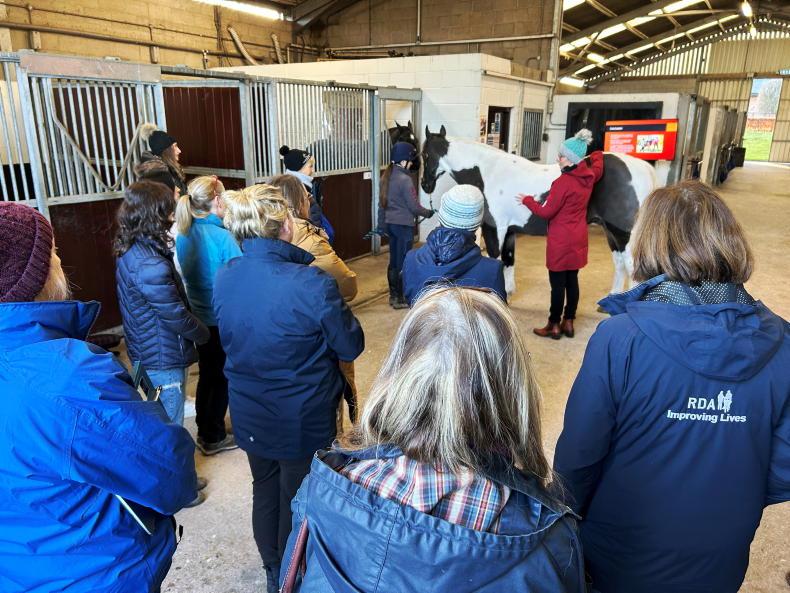
Oxytocin
Clare-Maria Campbell offered us an illustration of the importance of musculoskeletal health for horses working in an equine assisted context. Sometimes overlooked, in terms of fitness, horses undertaking work such as this need to be as fit as any other horse in regular work. They need to be able to transition well and collect, which in turn helps open up the learning receptors of the brain. “When you work at a rhythmic canter, particularly a soft collected canter, you get a euphoric response from the child because that hip-rocking rhythm causes the body to produce the feel-good hormone oxytocin.” Rupert explained. “When the horse is dancing lightly underneath you and rocking your hips like that, whether in piaffe, passage or terre-a-terre [canter on the spot], our bodies get flooded with oxytocin.”
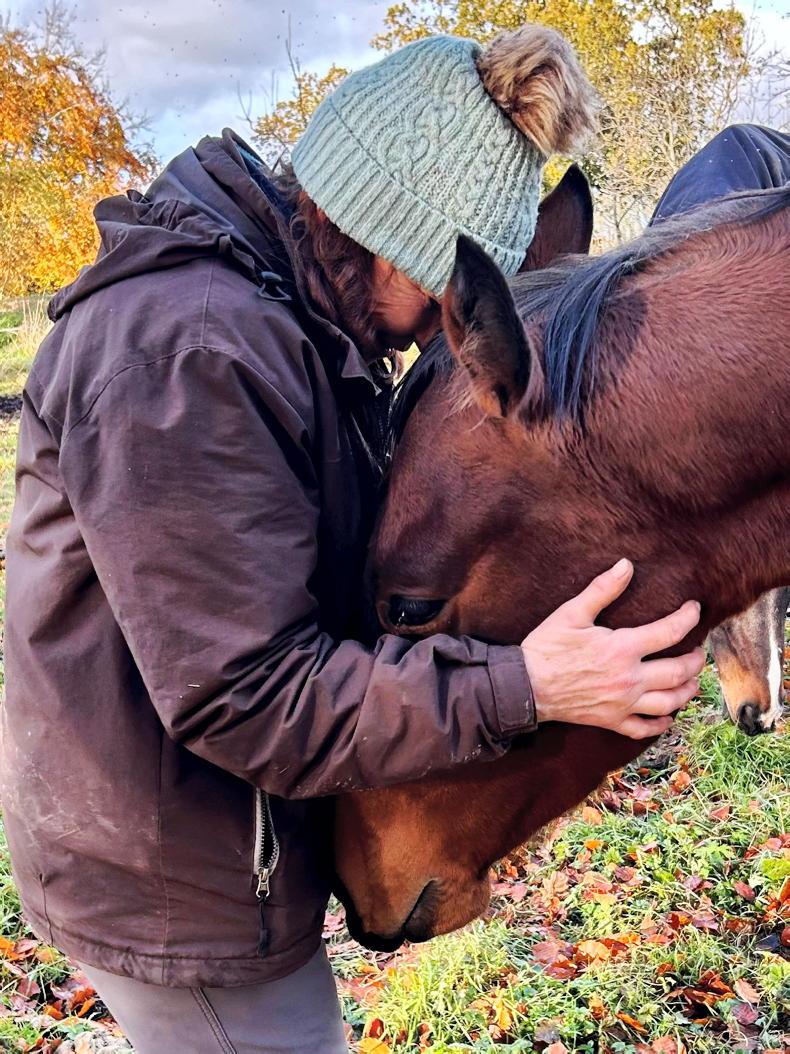
Oxytocin was certainly the order of the day as we were encouraged to practice our silly walks, to play tag and to hug the person next to us – and it worked, looking around the group who were tired and cold at the end of the day, spirits were high and attention was focused after a good laugh and a run about. Point well made.
Orlagh Daly and Clare McMonagle delivered a truly fascinating discussion on hippotherapy and on the Ulster University postgraduate certificate in Advancing Practice, Equine Facilitated Therapy, the first Ireland and UK equine facilitated therapy course of its kind. They also shared some case studies that palpably moved the room, evidencing the powerful effect the 2,000 multidimensional movements of the horse can have for patients with medical, sensory, physical or behavioural needs, in just one 30-minute session.
Following dinner, The Irish Field’sown Leo Powell led a lively discussion with the panel. Consensus was that healthy horses and healthy people was the equilibrium strived for and by working together to support one another, a healthy sector can achieve great things.
RUPERT ISAACSON is a champion of equine assisted wellbeing. His well-recognised work is groundbreaking in the development of teaching techniques using horses. Now taught worldwide, his methodologies consolidate the science, proving the connections between nature, play, learning and wellness which perhaps have never been so important for us to understand and share.
I run something called the Horse Boy Foundation which works with autism, anxiety, ADD, anything to do with the brain. We are now a worldwide organisation, but it started with a personal story, that of me and my son.
I’m a lifelong horseman, grew up with thoroughbreds. Grew up hunting, chasing, eventing. I moved to America and when my son was born, he was diagnosed very severely autistic. I didn’t know what to do and none of the orthodox therapies I was trying worked, in fact they made it worse.
I thought that my son was not safe around horses, so it didn’t occur to me at that point to go down any therapy with riding, but I did seek out mentorship from a very famous autistic person who had started life as severe as my kid; incontinent, self-harming. That’s a woman called Dr Temple Grandin who is very well known in America. She is a professor of animal sciences and if you eat a McDonald’s or Burger King over there, chances are that animal went through a slaughterhouse designed by her to be less stressful.
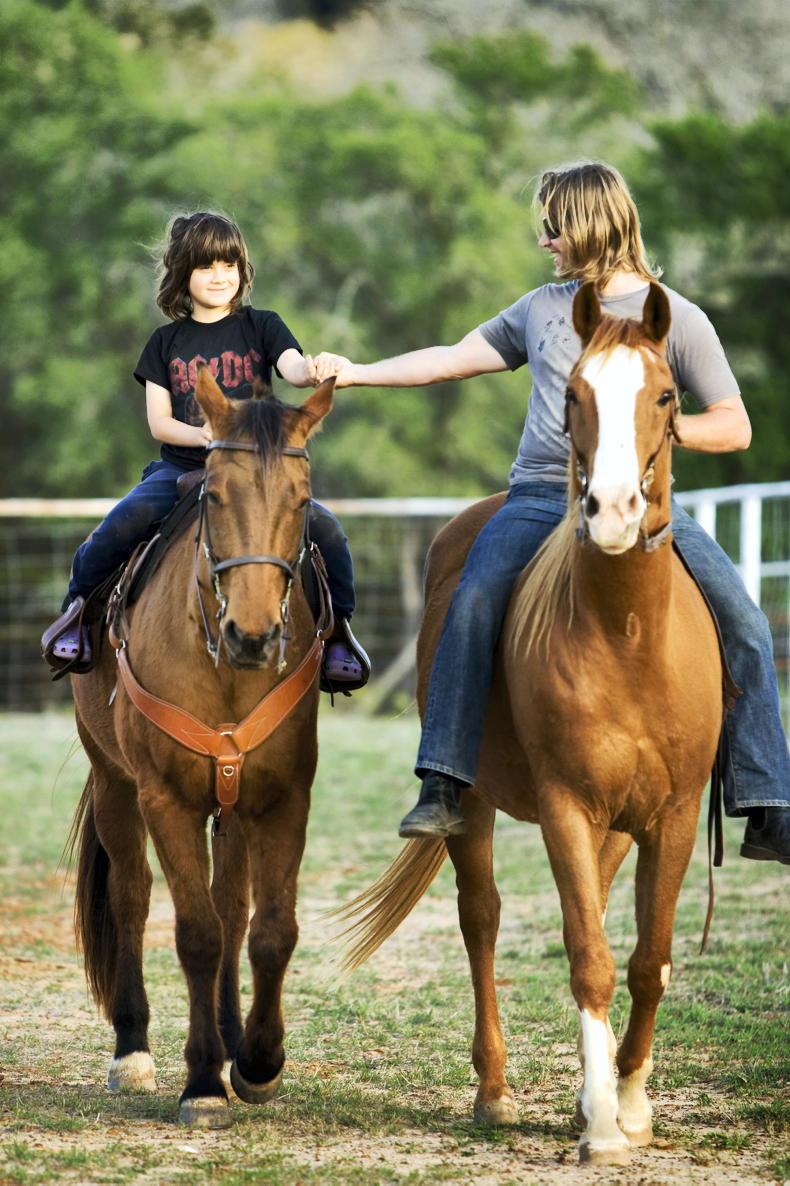
So, I had an interview with her and I said how does my son become you? And she said do three things, she said follow the kid, follow the child in every way, physically, so you can observe. Emotionally, so you can see what sensory issues please or displease him. And intellectually, what turns his brain on? What is he obsessed with? And because of this, because I followed her advice when he wanted to go foraging in the woods, I went with him.
Agitated behaviours
Suddenly we had this nice interaction going on, even without words or signs of expression. It was during one of these foraging expeditions he saw my neighbour’s mare and ran to her. He made his own connection with her. He wanted to go back to her every day, and I knew this mare, I knew she was quiet. He was showing me with his body that he wanted to get up on her, jumping up and down next to her with his arms up. So, I would put him up and keep a hand on him while she grazed. All of his really agitated behaviours went away. I didn’t know why at that point; I know why now. I then thought, well what would happen if I rode with him?
So, it’s Texas, it’s a big old western saddle, room for two, all the kids start riding that way. I get up with him, I’m searching for inspiration, I ride down towards the pond, and a big blue heron gets up and flaps away. He says heron! And what’s interesting was that was the same week that his speech therapist gave up on him. And I was like don’t worry, I’ve got a new therapist! She’s got four legs; she’s got these amazing skills!
His speech came really fast. I noticed almost immediately the first day that it made a big difference what rhythm the horse was in. If the horse was in any degree collected, you got more speech than if the horse was not collected. I didn’t know why. But it was so clear, so I started to do more and more in collection until I could canter the mare literally on the spot. And I got other kids too, the same reaction, the same reaction. I started painting letters on trees, he starts reading, I started getting friends and family to cluster together, he starts to be counter numeral.
Happiness hormones
Then I thought, I need to know why this is working. I’m a journalist, so always want to know why. So, I contacted neuroscientists in different countries, and they explained to me what was going on. And basically, the rocking of the hips in rhythm when the horse is in collection in that way makes your body produce a hormone called oxytocin. Oxytocin is the main happiness hormone, we’ve got four main happiness hormones, but it’s the big one.
But crucially it’s also the communication hormone, it makes you communicate. And there’s a biological reason why it’s evolved this way, but the fact is that’s what it does. So, you take a child that doesn’t want to communicate and you flood him with a hormone that makes him feel fantastic, and calms down all the sensory issues, and makes him compelled to communicate.
I realised we could replicate this and so Horse Boy Method sort of became a thing. We casually put out one little thing on Facebook in 2010 saying we think we can train other people how to do this, does anyone fancy it? We have just been busy ever since. Now it’s in forty countries, we serve about three hundred thousand families a week, not me personally, but through people we have trained and their progress. It’s in schools, we have a way of doing it without a horse that’s in schools called Movement Method. In Ireland actually quite a lot of schools offer it, particularly in Co Cork and Limerick, David Doyle is the man to talk to.
There’s a connection with thoroughbreds too. We have a programme in San Francisco called Square Peg Foundation run by Joell Dunlap who grew up in the racing industry on the west coast there. She uses exclusively thoroughbreds for this work. And we are basically training the horse in classical dressage so that they can go super collected with the kids on top of them. We find that the thoroughbreds are exceptionally good at this work. Because not only are they super smart, they are super athletic. But they have a super sensitive type of empathy so she works very closely with off the track thoroughbred associations in the USA. We are hoping to build more thoroughbred related programmes for this as we grow.
For more information on Rupert and his programmes, visit Horseboymethod.com or for the unmounted programme go to Athena-equine.com.




 This is a subscriber-only article
This is a subscriber-only article
 It looks like you're browsing in private mode
It looks like you're browsing in private mode














SHARING OPTIONS: